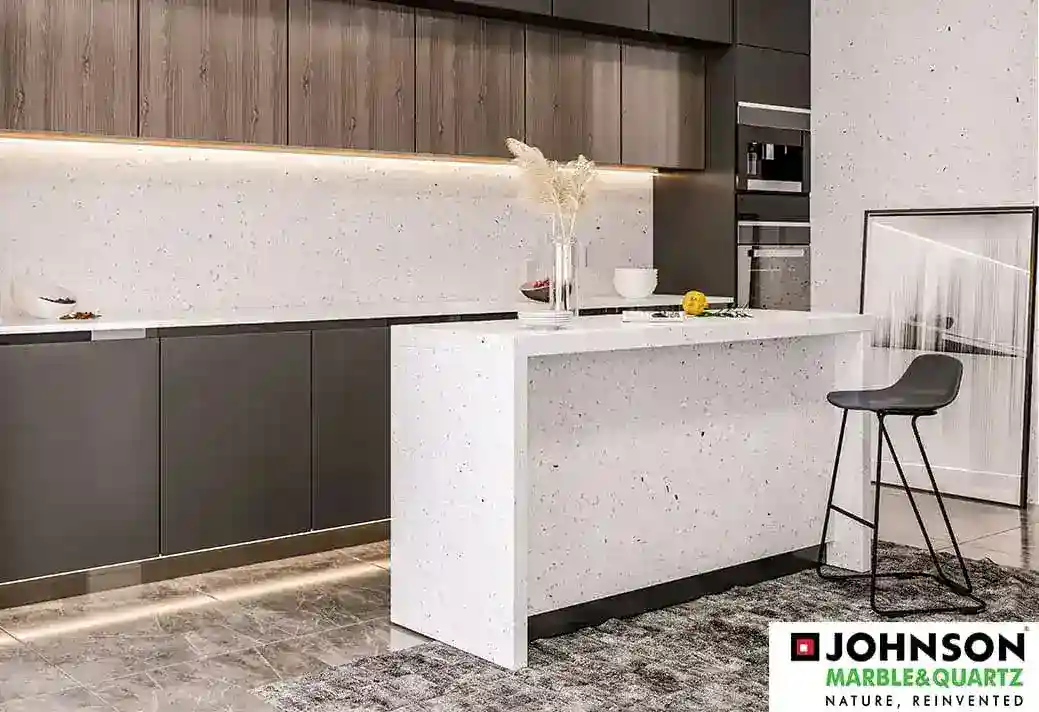Introduction of quartz stone:
Quartz, a versatile and durable stone, has become increasingly popular in modern architecture. Due to its unique characteristics, it is a great choice for a range of applications,including countertops and floors. Here, we'll look at quartz's various advantages and how it's used in contemporary building.
What is Quartz?
Quartz is a naturally occurring mineral that consists mainly of silicon dioxide. It is widely available and can be found in various forms, ranging from massive crystals to refined grains. Due to its abundance, quartz is one of the most commonly found minerals on Earth's crust.
One fascinating aspect of quartz is its diverse range of colors and patterns. These variations are caused by impurities that were present during the formation process. For example,amethyst quartz stone exhibits purple hues due to traces of iron, while rose quartz showcases a pink coloration resulting from titanium or manganese impurities. This natural beauty makes quartz an attractive choice for decorative purposes in architecture.
Beyond its aesthetic appeal, the use of quartz stone in architecture also offers numerous practical advantages. Quartz possesses exceptional hardness and durability, making it resistant to scratches and impacts. Its non-porous nature also renders it highly resistant to stains and moisture absorption compared to other materials like marble or granite. Additionally, quartz stone requires minimal maintenance since it does not require sealing or periodic reapplication.
Durability and Strength of quartz
Quartz possesses remarkable durability, making it an excellent choice for architectural projects. Unlike natural stones like marble or granite that necessitate frequent sealing to maintain their integrity, quartz is naturally non-porous and exhibits exceptional resistance to stains, scratches, heat, and impact. This inherent quality makes quartz stone highly suitable for high-traffic areas with heavy footfall or spaces exposed to moisture, such as kitchens and bathrooms.
The three most common types of marble used for staiThe non-porous nature of quartz prevents liquids from seeping into its surface, inhibiting the growth of bacteria and mold while also simplifying cleaning processes. Its resistance to scratches ensures longevity even in bustling environments. Moreover, the ability of quartz to withstand high temperatures without warping or discoloration adds another layer of practicality when used near heat sources.
Versatility of quartz slab
Architects highly appreciate quartz for its remarkable versatility. Thanks to advancements in manufacturing techniques, engineered quartz slabs can now be created with consistent color patterns that span the entire length of the slab. This feature enables designers to achieve a seamless and uniform appearance across expansive surfaces, such as kitchen countertops or wall claddings. The ability to maintain continuity and consistency in color patterns throughout these large areas enhances the space's aesthetic appeal while providing a visually pleasing backdrop for various design elements. Whether creating a sleek modern kitchen or an elegant interior, architects value quartz for its ability to deliver functionality and aesthetic harmony at scale.
Aesthetics of quartz slab:
Quartz is an excellent choice for architects who desire a broad spectrum of design options. It presents a versatile range of aesthetics to cater to various architectural preferences. Architects can select from timeless white shades that exude elegance and sophistication or opt for vibrant, bold statement colors to create eye-catching focal points. Additionally, quartz offers the opportunity to replicate the intricate veining patterns found in natural stones such as marble or granite, providing a luxurious appearance without the associated maintenance concerns.
One notable advantage of engineered quartz slab is their consistency compared to natural stone alternatives. As these slabs are manufactured under controlled conditions using pigments and resins, they offer a higher level of color and pattern variation uniformity. This consistency gives architects greater control over achieving their desired aesthetic outcomes with predictable results throughout the project. Whether creating visually striking countertops or captivating wall claddings, engineered quartz stone provides reliability in delivering consistent quality and appearance.
Architects can confidently explore different design avenues knowing that quartz offers an extensive array of choices while ensuring reliable performance through its consistent manufacturing process.
Maintenance Ease
Maintenance plays a crucial role when selecting materials for architectural projects. Quartz, in particular, is an excellent choice as it requires minimal upkeep. Regular cleaning with mild soap and water is sufficient to keep quartz looking pristine over time. Unlike some materials that may require periodic sealing or polishing to maintain their shine and luster, quartz stone retains its beauty without requiring extensive maintenance. This makes it an affordable and long-lasting choice for people looking for a low-maintenance answer to their architectural needs.
Sustainability of quartz stone
Sustainability is a crucial factor in the field of architectural design given the increased emphasis on environmental awareness. When it comes to quartz stone manufacturers, they have recognized the significance of sustainable practices and have taken substantial measures to minimize waste during production processes. By implementing efficient production techniques and optimizing resource utilization, these manufacturers aim to reduce their ecological footprint.
Furthermore, many quartz stone manufacturers actively incorporate recycled materials into their products. This approach helps repurpose materials that would otherwise end up as waste and reduces the demand for new raw materials extraction. Using recycled content in their quartz products, these manufacturers contribute to a circular economy by promoting resource conservation and reducing landfill waste.
Moreover, one notable aspect contributing to the sustainability credentials of quartz is its exceptional longevity and durability. Quartz stones are renowned for their robustness and resilience against wear and tear over time. Their inherent strength minimizes the need for frequent replacements or repairs compared to other less durable alternatives. As a result, this extended lifespan significantly reduces material consumption while minimizing overall environmental impact.
Conclusion
Quartz in modern architecture has revolutionized interior design by offering an exquisite blend of beauty and functionality. Its durability, versatility, low maintenance requirements, and sustainable attributes make it an excellent choice for architects seeking reliable materials that can withstand the test of time. Whether renovating your kitchen or designing commercial spaces with high foot traffic, consider incorporating quartz into your architectural projects for a touch of timeless elegance.
So there you have it - a guide to understanding the use of quartz in modern architecture! With its remarkable properties and aesthetic appeal, this versatile stone continues shaping contemporary designs across residential and commercial spaces. Next time you encounter stunning countertops or captivating wall claddings that catch your eye, they might be crafted from beautiful quartz!


